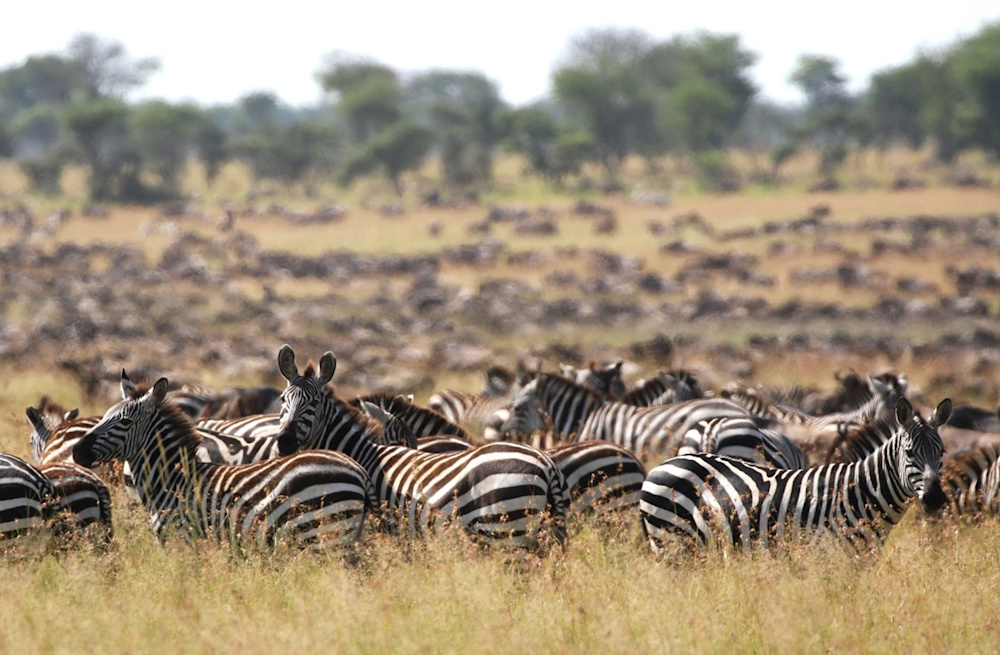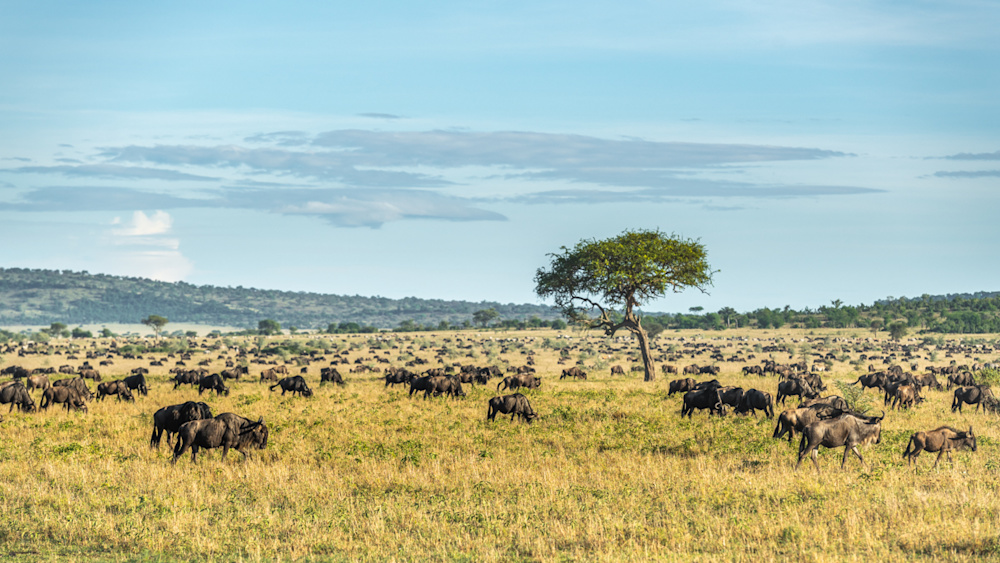June 2024
The Great Migration
Share:
The Great Migration
As dawn breaks over the Grumeti Reserve, casting a golden glow across the land, I find myself once again pondering the mysteries of nature. This June has been unlike any other really, with the great wildebeest migration presenting a puzzling and unexpected turn.
The head of the migration arrived a little later than usual, compared to previous years. Typically, by this time, the Grumeti Reserve would be alive with the thunderous roars of thousands of rutting wildebeests moving together, a mighty force of nature heading towards the lush grazing lands of the Lamai - north Serengeti. But this year, the scene is different. Instead of the usual river of life, we have witnessed the arrival of wildebeests in small, fragmented batches, each group numbering only in the hundreds.
Perhaps it’s because food and water are everywhere, a consequence of the unusual intense El Niño. From October last year until this May, we experienced one of the most significant El Niño events in recent memory. The sky poured its heart out, drenching the land with incessant rain. Puddles turned to ponds, and the earth, usually so accommodating, struggled to drink up all the water. This abundance of resources meant the wildebeests could find sustenance throughout the landscape, reducing their need to move in their traditional massive herds.

With the smaller batches of hundreds arriving, we now look to July with hope. As the days grow hotter and the rainy season becomes a memory, the water sources are starting to dry up quickly. The once plentiful grasslands are beginning to wither under the relentless sun. This rapid change in the environment means that the wildebeests will soon face the need to congregate again, seeking out the remaining pockets of water and fresh grass that are vital for their survival.
We anticipate that July will unveil the body of the migration arriving in black army masses, opening up a new chapter of nature’s marvel. Imagine the spectacle: thousands upon thousands of wildebeests filling the horizon, their collective movement creating a living, breathing wave across the plains. This magnificent display will mark the full resurgence of the migration, a sight to behold as they stay with us before heading on to the Mara River and the Lamai Triangle.
As a guide, watching these creatures adapt is both inspiring yet concerning. Their fragmented journey suggests a flexibility born of necessity, a resilience in the face of change. Yet, it also raises questions about their long-term survival and the health of future generations. The ripple effect of this migration disruption extends beyond the wildebeest. Predators, who rely on the dense herds for sustenance, now find their prey dispersed. This scattering could lead to increased competition among lions, hyenas, and other carnivores, altering the delicate balance of the ecosystem.

As we come to the end of June, gazing out over the reserve, we witness the small batches of wildebeest making their way across the plains, let’s hold onto hope. July promises the potential for the full-fledged activities of the migration to resume.
It’s a tale of survival, adaptation, and the ever-changing dance of life.

By Edward Sawe Kaaya
Head Guide